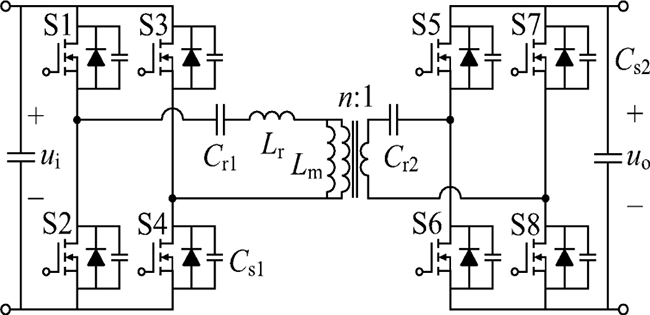recently, the ieee applied power electronics conference (ieee apec 2018) was held in san antonio, usa. the paper report of sun kai, associate professor of department of electrical engineering of tsinghua university, won the outstanding presentation award at the conference.
this paper is entitled "a phase-shift-based synchronous rectification scheme for bi-directional high-step-down cllc resonant converters", reporting the latest research results of this research team on synchronous rectification technology of resonant power electronic converters.
gao yucheng made the report on behalf of the research team and received the outstanding presentation award
the capacitor-inductor-inductor-capacitor (cllc) resonant converter (fig.1) is a dc-dc power electronic converter which has received wide attention in recent years. it uses the resonance phenomenon between inductance and capacitor to realize the zero-voltage switching-on and -off of power electronic switching devices, which significantly improves the efficiency of power electronic converters. at the same time, the converter can achieve a higher input/output voltage ratio by adjusting the turn ratio of the high frequency transformer in the resonant converter.
however, in the current design of most resonant converters, the power output side circuit still relies on traditional diodes (or anti-parallel diodes parasitized by power field effect transistor) for rectification, and there is a certain tube voltage drop when the diode is turned on, so there will be a greater loss in the diode, which will affect the further improvement of the efficiency of the converter. in addition, when feedback energy is needed from the output side to the input side of the converter, the diode can not actively control the source of excitation current of the high frequency transformer in the converter. this will not only affect the voltage output characteristics of the converter, but also increase the conduction loss and current stress when the excitation current comes from the low voltage side.
fig. 1topoloy of cllc resonant converter
to solve the above problem, the research team designed a proposed synchronous rectification strategy for cllc resonant converter, which replaces the function of diode in the circuit by actively controlling the switch of field effect transistor. the field effect transistor (fets) is used because in power electronic converters, its losses are significantly lower than those of the diodes at the same level when it transmits the same current. with the new synchronous rectification strategy, the converter can be improved obviously in efficiency. unlike the conventional simple synchronous rectification strategy, the proposed strategy creatively sets a small phase shift angle in the control signal of power electronic switch on the low voltage side (figure 2). as a result, the low voltage side current is forcibly set to zero during the on-off transient of the power electronic switch, which ensures that the main component of the excitation current comes from the high voltage side. this method not only reduces the current stress and conduction loss at the low voltage side, but also ensures that the converter has the same characteristics when power flows in two directions.

(a) 传统简易同步整流策略示意图 (b) 新型同步整流策略示意图
figure 2: a comparison between the conventional synchronous rectification strategy and the proposed one
the experimental results show that the proposed synchronous rectification strategy can improve the efficiency of the converter by 4-6% (fig. 3), which means that the total heat generated by the loss of power electronic switching devices can be reduced by 50%. compared with the conventional simple synchronous rectification strategy, the proposed synchronous rectification strategy not only improves the efficiency by one percentage point (the total calorific value is further reduced by 25%), but also has a larger voltage regulation range, which realizes the symmetry of bidirectional power flow. in addition, the research results of the research team are also applicable to llc (inductance-inductance-capacitance) resonant converters with simpler circuits and wider applications.
fig.3 efficiency test curve of cllc resonant converter
the above research results can be widely used in various industrial and civil fields requiring bidirectional power transmission, such as battery energy storage system, electric vehicle charging and discharging, fuel cell power generation and electrolytic hydrogen production devices.
the research work was completed by sun kai, associate professor, department of electrical engineering, tsinghua university. gao yucheng is the first author and sun kai is the correspondent author.
the the ieee applied power electronics conference (apec) is the highest-level international conference and exhibition of power electronics, which is held in the united states in march every year. more than 3,000 experts, scholars and business representatives attended the conference in 2018, and more than 280 enterprises from the power and electronics industry all over the world attended the industrial exhibition during the conference. (source: tsinghua news network)








